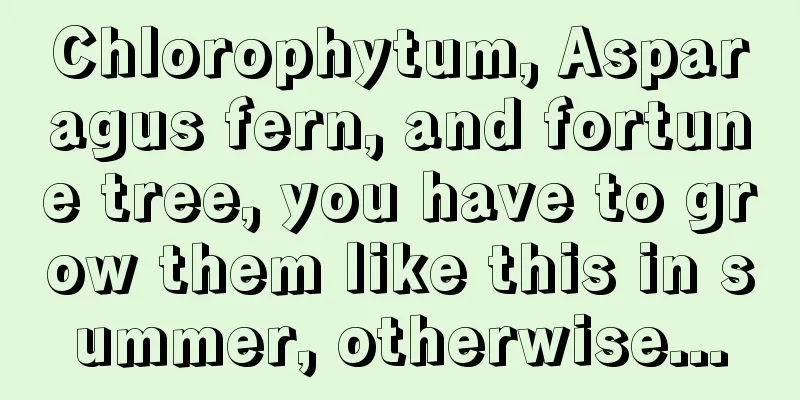Corn seedling pest control methods

|
The stage from emergence to jointing of corn is called the seedling stage. The main growth characteristic of this period is that the growth of the aboveground part is relatively slow, while the roots expand rapidly. During the seedling stage, the focus of field management is to promote the healthy development of the roots, ensure that the corn seedlings are complete, uniform and strong, and lay a solid foundation for future harvests. Below we will learn about methods of controlling diseases and pests in the corn seedling stage. 1. Disease prevention and control at the seedling stage 1. Corn root rot This is a disease caused by the fungus Pythium, which is characterized by browning, softening and rotting of the roots, resulting in stunted plants, yellowing leaves and even death of seedlings. Prevention and control methods include: using chlorpyrifos suspension seed coating agent or Manshijin seed coating agent to coat seeds before sowing. After the disease occurs, strengthen cultivation management, spray foliar fertilizer , and till the soil to disperse moisture. In severe cases, use mancozeb/ cymoxanil wettable powder or mancozeb/metalaxyl wettable powder for spraying or root irrigation. 2. Corn top rot The upper and middle leaves of the diseased seedlings lose their green color and become deformed. Prevention and control methods include: spraying fungicides such as carbendazim, mancozeb, fungicide or agricultural streptomycin in the early stage of the disease. 3. Corn Rough Dwarf Disease The diseased seedlings are dark green, the internodes are shortened, the leaves are stiff, and the plants grow slowly. Prevention and control methods include: planting disease-resistant or disease-tolerant varieties, and applying more organic fertilizers and phosphorus and potassium fertilizers. 4. Albino corn seedlings White streaks on leaves are caused by zinc deficiency in the soil. Control methods include spreading zinc sulfate mixed with fine soil at the time of sowing. Spray zinc-deficient seedlings with zinc sulfate solution. 2. Pest control at seedling stage 1. Cutworms It feeds on the tender stems of plants, causing the plants to die. Prevention and control methods include: spreading poisonous soil and using chlorpyrifos emulsifiable concentrate mixed with fine sand and soil. Poison baits are used to kill larvae, and phoxim is used to spray forage. Irrigate the roots with the medicine, use chlorpyrifos mixed with water. For prevention and control, use black light or sweet and sour liquid to trap and kill. 2. Mole Cricket It eats the roots of young corn , causing the plant to die. Prevention and control methods include: poisoning with poisoned soil, poisoned bait, using phoxim mixed with fine soil or roasted millet. The trapping method uses fresh horse manure or light trapping. 3. Wireworm Harm the roots of corn seedlings. Prevention and control methods include: using chlorpyrifos or phoxim mixed with fried wheat bran or bean cake to make poison bait. 4. Sticky insects Overeating corn leaves causes reduced yields. Prevention and control methods include: using sweet and sour liquid and black light to lure and kill adult insects. Use flubendiamide emulsifiable concentrate or chlorfenapyr spray for prevention and control. 5. Sunflower mealybug It mainly harms the root system of corn. Prevention and control methods include: spraying or root irrigation with acephate emulsifiable concentrate, imidacloprid or chlorpyrifos emulsifiable concentrate during the nymph stage. In short, we need to closely monitor the health of corn seedlings, promptly detect and prevent possible diseases and pests, and reduce the impact on corn growth.
|
>>: How to care for orchids in spring? Can I change the soil?
Recommend
How to propagate trumpet creeper by cuttings and precautions
Trumpet creeper is also called purple trumpet, fi...
Planting methods and management techniques of honeysuckle
Yangjiaomi is a kind of thin-skinned melon . It h...
How to repot the goldfish plant
1. Time to change pots It is best to repot the go...
What to do with artificially bred leeches in winter?
Leeches, commonly known as leeches , are a type o...
Is wild sedge poisonous?
1. Is it poisonous? Wild sedge is somewhat toxic....
How and when to plant chili peppers?
Suitable planting time for chili pepper The plant...
Put some of it in a succulent pot, and they will all grow into plump and fat plants, oozing with oil!
Add some slow-release fertilizer to the pot and i...
How to grow sweet potatoes to get high yields and large fruits? New techniques and tips for growing sweet potatoes
How to grow sweet potatoes for high yield Sweet p...
Is it better to grow flowers in water or soil in winter?
Is it better to grow flowers in water or soil in ...
Mint and mugwort, repelling insects and benefiting the body and mind
Vanilla scent repels mosquitoes but attracts butt...
Diseases of White Orchid and Their Control
Anthracnose of white orchid symptom It is a funga...
What are the methods and precautions for raising Qilin? How to raise Qilin flowers
Kirin has a peculiar shape and looks majestic and...
Winter care of Gloxinia
1. Low temperature treatment In winter, when the ...
Cutting propagation methods and precautions for sweet-scented osmanthus trees
Osmanthus tree cutting time The propagation metho...
Oat planting conditions and temperature requirements for the growing environment
Oat Growing Conditions 1. Temperature conditions:...









